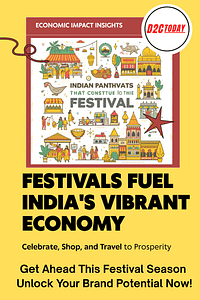Discover how to set up a WhatsApp Business Catalogue for D2C brands. Boost sales with rich product showcases, automation, and API integration.
WhatsApp Marketing for D2C Brands is the gold standard for modern customer engagement, delivering 98% open rates and up to 60% conversion, far exceeding traditional channels. By leveraging advanced automation and the WhatsApp Business API, D2C brands can build genuine, profitable relationships with every customer at scale.
What Is a WhatsApp Business Catalogue & Why Is It a Game-Changer?
A WhatsApp Business Catalogue is a powerful feature that lets brands display their products/services within the app, making it easy for customers to browse, discover, and purchase all in a seamless chat experience. For D2C brands, this digital storefront acts like a mini-e-commerce site, driving product discovery, impulse purchases, and conversational commerce without friction.
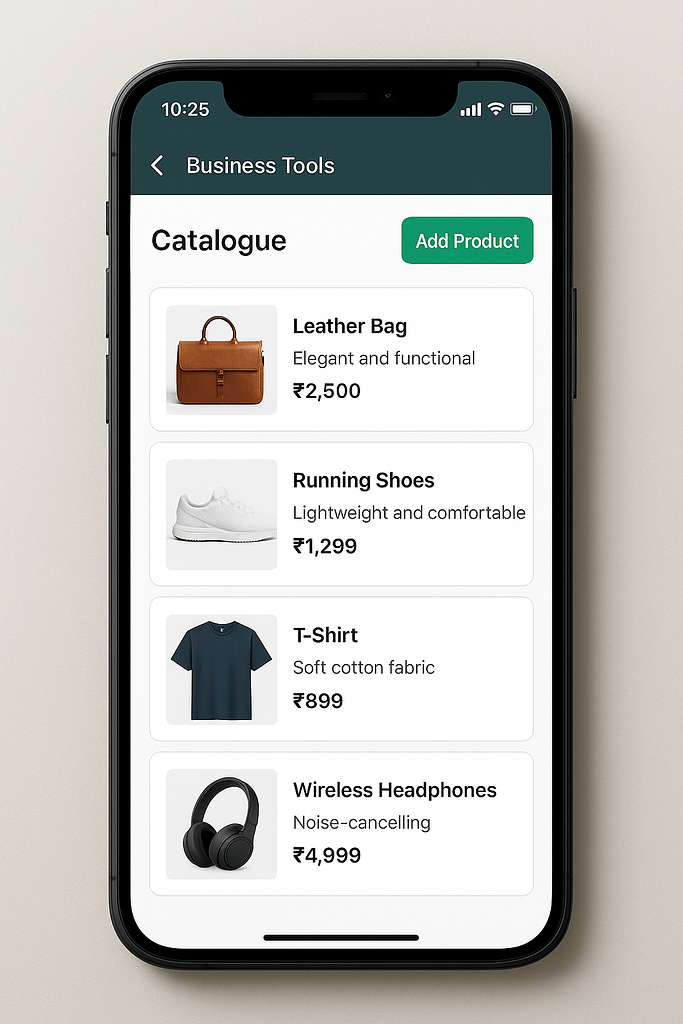
Recent data shows that over 40 million people view a WhatsApp Business Catalogue each month and brands using catalogues report conversion rates up to 60% dramatically higher than most D2C websites or email campaigns.
As WhatsApp cements itself as the world’s leading messaging app, a visually appealing, easy-to-edit catalogue is a must-have for any ambitious D2C WhatsApp marketing strategy.
WhatsApp Automation for D2C Brands: Unlock Sales and Engagement in 2025
How to Create a WhatsApp Business Catalogue: Step-by-Step (2025)
Setting up a catalogue is quick—and can be done directly from your phone, desktop, or with the WhatsApp Business API for larger, automated catalogues.
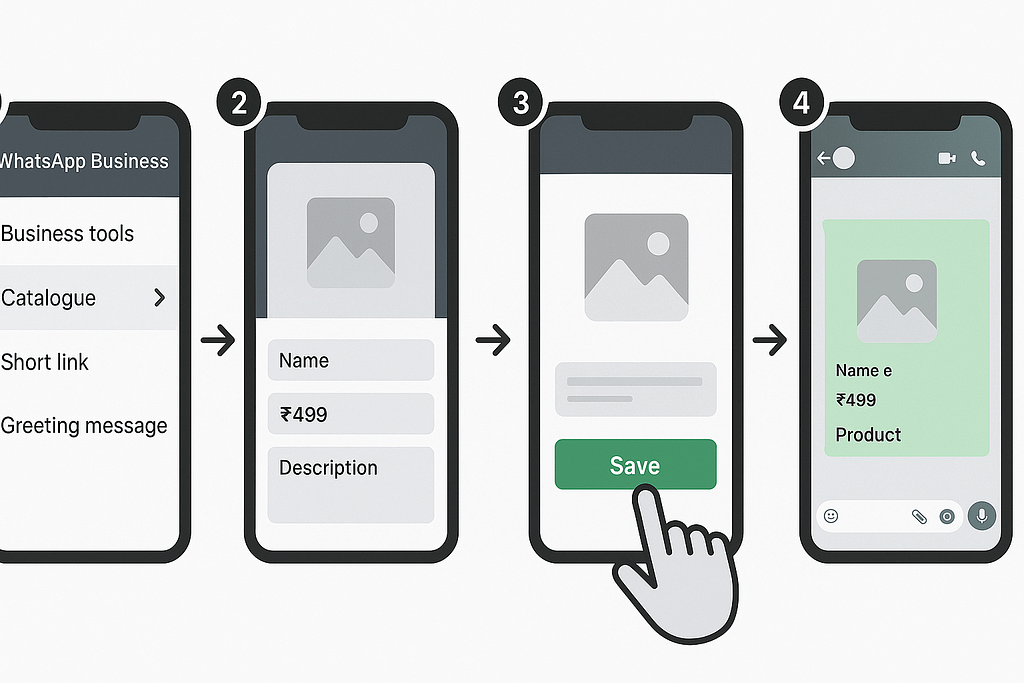
Step 1: Access Your Catalogue Section
- Open the WhatsApp Business App.
- Go to “Settings” > “Business Tools” > “Catalogue”.
Step 2: Add Products or Services
- Tap “Add Product or Service”.
- Fill in required details:
- Product/Service Name (up to 120 characters)
- Price (optional, supports currency symbols)
- Description (up to 5000 characters)
- Website link (for more info or direct checkout)
- Product/Service code or SKU (inventory tracking)
- Add high-quality images (up to 10 per item; JPEG/PNG best; 5 MB limit per photo).
Step 3: Publish & Share
- After saving, your catalogue is published instantly.
- Share individual items or the entire catalogue link within chats, groups, or broadcast campaigns.
- Update or remove products anytime a live, interactive shop for your customers!

Integrate With WhatsApp Business API for D2C Scale
For D2C brands needing bulk uploads, inventory sync, or seamless connection with their online store, integrating the WhatsApp Business API is essential. API catalogue integration allows:
- Automated product imports from eCommerce platforms (Shopify, WooCommerce).
- Dynamic edits and inventory updates at scale.
- Interactive shopping: customers add-to-cart, ask questions, or order directly from chat.
- Personalized shopping flows (AI-powered recommendations, additional upsells).
Note: API integration usually requires a Business Solution Provider. While setup is more technical, it unlocks true enterprise automation and is the gold standard for high-volume D2C WhatsApp marketing.
WhatsApp Marketing Strategies for D2C Brands: Unlock Growth with D2Ctoday
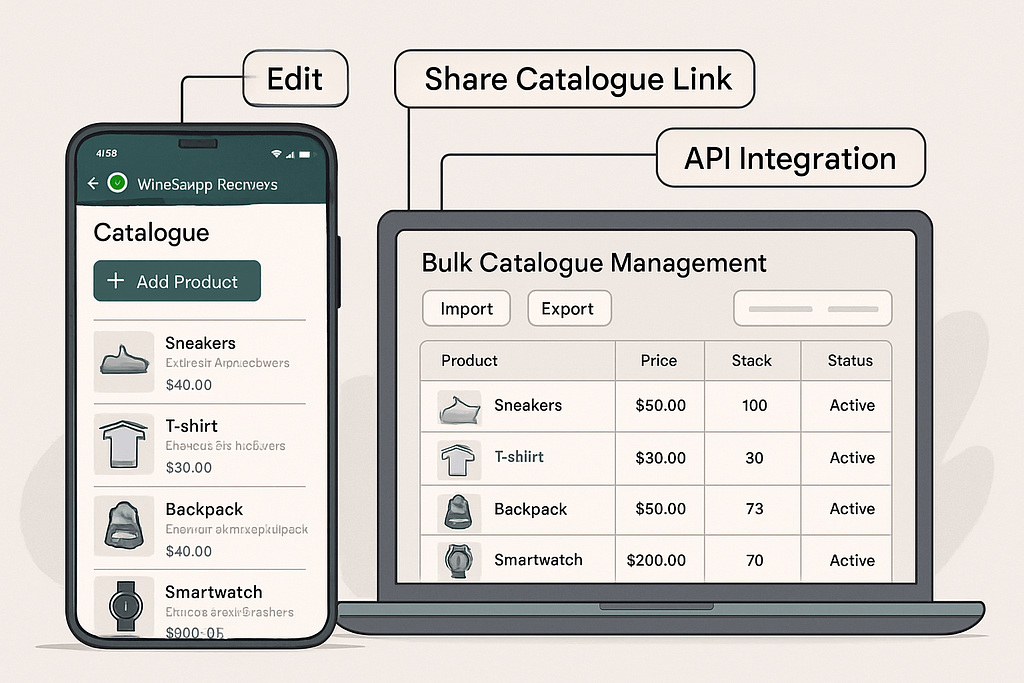
WhatsApp Business Catalogue vs. Traditional Online Store
| Feature | WhatsApp Business Catalogue | Traditional Online Store |
|---|---|---|
| Easy Mobile Discovery | Yes | Depends on optimization |
| 1-Click Sharing in Chat | Yes | No |
| In-App Conversational Buy | Yes | Not native |
| Quick Edits/Updates | Yes (live in-app) | Often slow/IT dependent |
| Customer Support Access | Instant (same chat) | Email or ticket required |
| API Automation | Advanced (via API) | Advanced but often complex |
| Analytics & Reporting | Improving rapidly | Robust (but siloed) |
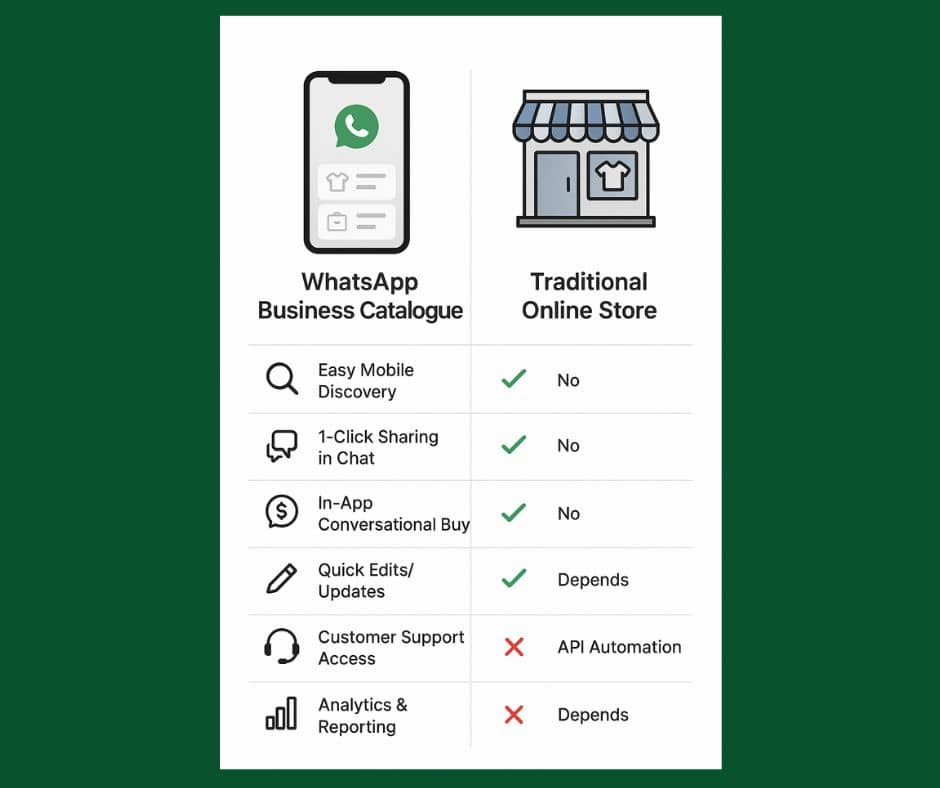
Best Practices: Optimizing Your WhatsApp Business Catalogue for D2C Brands
- Use Professional Photos: Bright, clean images boost clicks and conversions.
- Detailed, Benefit-Driven Descriptions: Go beyond basic specs—address buyer pain points and highlight USPs.
- Keep Inventory Updated: Remove out-of-stock or seasonal items to avoid customer frustration.
- Leverage Catalog Links in Campaigns: Share directly in WhatsApp broadcasts, Stories, and CTAs in automated flows.
- Enable Quick Replies: Use automated templates for FAQs, pricing, or delivery queries (integrate chatbots for scale).
- Segment and Personalize: Use catalogue sharing with segmented lists (VIPs, new buyers, abandoned cart) for hyper-targeted D2C WhatsApp marketing.
Latest Trends: Catalogues, Commerce, and Conversion in 2025
- AI Product Recommendations: Many APIs and CRMs now suggest items from your catalogue based on chat behavior or previous order data.
- Abandoned Cart Recovery: Catalogue links with automated reminders recover up to 35% of lost sales for D2C brands.
- Seamless Payments: Integration with UPI or Meta Pay allows full end-to-end transactions inside WhatsApp.
- Shoppable Stories: New features let you tag catalogue products in WhatsApp Status/Stories (rolling out globally).
- Omnichannel Integration: Catalogues can sync across Meta platforms (Facebook/Instagram Shops, Ads).
Why Every D2C Brand Needs a WhatsApp Business Catalogue
A WhatsApp Business Catalogue isn’t just a nice-to-have—it’s a conversion-driving, engagement-boosting powerhouse at the core of modern D2C WhatsApp Marketing. Setup is simple, supported by rich product features and further supercharged through the WhatsApp Business API. Brands that embrace catalogue commerce see higher open rates, more repeat purchases, and vastly improved customer experiences.
Take action:
- Set up your WhatsApp Business Catalogue today.
- For D2C scale, explore API integration for seamless automation.
- Use catalogue links in every campaign, FAQ, and support chat for maximum results.
FAQs
Q1. Is a WhatsApp Business Catalogue free?
Yes, it’s free for all WhatsApp Business users. There may be setup costs for API integrations.
Q2. How many products can I add?
Up to 500 items per catalogue via the app; API solutions may support more and easier bulk management.
Q3. Can I manage my catalogue from a desktop?
Yes, via WhatsApp Web/Desktop (limited controls), but API integrations work best for desktop workflows.
Q4. Is catalogue available internationally?
Most countries now support catalogues, but features vary by region—check the in-app options.
Q5. Do catalogues support digital or service-based products?
Yes—use creative images and detailed descriptions for services, consultations, events, or downloads.




